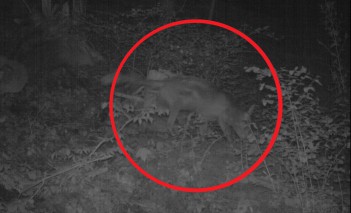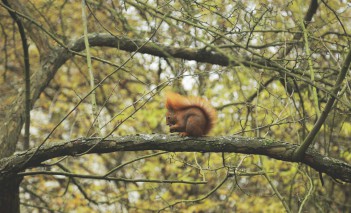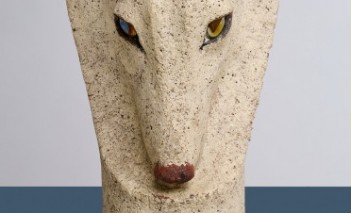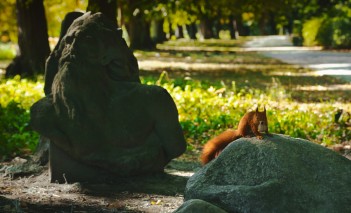Foxes in the Royal Łazienki. See what you need to know
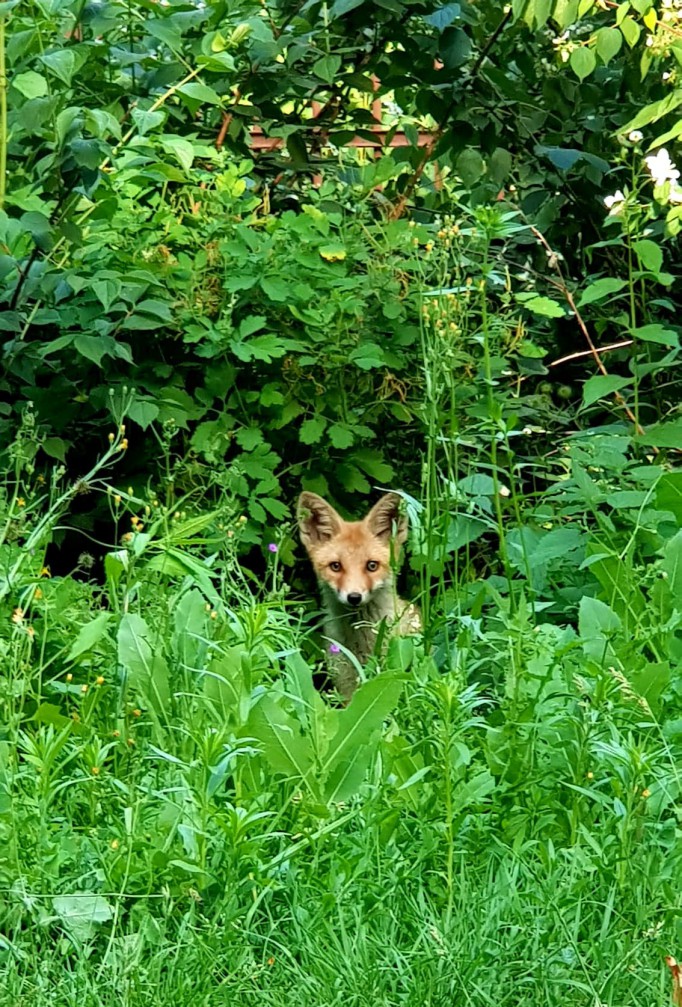
Foxes – the ubiquitous predators – are regular visitors to the Łazienki Gardens and can often be encountered during strolls. During such encounters, one should take appropriate safety precautions, just like when meeting other wild animals.
Foxes dug their first burrow in the Łazienki Gardens and brought their cubs around 2004; they have visited us regularly ever since. Lately, our guests have seen these ubiquitous predators increasingly often, also on popular walking trails. The animals attract much interest, provoking questions regarding their behaviour and the best course of action upon meeting them.
Foxes in the city. Where did they come from?
Foxes are an element of Warsaw’s fauna. Until the 1990s, their population was limited to forests and biological communities occurring on the city’s peripheries. In the recent decades, the number of foxes in Europe and Poland has been on a systematic rise. The growth is owed to efforts aimed at vaccinating the predators against rabies, reduced interest by hunters (hides have no economic value), as well as the emergence of new sources of food.
Due to their increased population, foxes began to colonize urban areas: parks, allotment gardens, cemeteries, and even compact settlements and industrial areas. In Warsaw, foxes’ population density is close to the level measured in non-urban areas.
Foxes in the Royal Łazienki
The Łazienki Gardens are an attractive area for foxes due to high availability of food. The predators prey on the numerous striped field mice (this species populates cities at an unprecedented scale). Foxes mainly feed on small rodents, thus reducing their population. By eating carrion, they also fulfil a sanitary function, and by hunting for sick animals, they prevent the spread of diseases.
The Royal Łazienki is not the only urban area where foxes began breeding last year. Cubs have also been reported on the premises of the Warsaw University of Life Sciences in Rakowiecka street, on the Jewish Cemetery in the Wola District and in the vicinity of the Warszawa Śródmieście train station. It is very likely that there are more places like this, but it is extremely difficult to detect foxes that are breeding in the city.
Should you be wary of foxes?
Scientific literature and experience across the country does not indicate that foxes may pose any substantial risk to people. As a result of long-term vaccination campaigns, the risk of foxes contracting rabies is marginal, much lower than for squirrels, mice and bats. The most recent rabies infections in humans – in early 21st century – were caused by interactions with domestic animals. Foxes may be infected by ectoparasites, which live on most vertebrates, e.g. hedgehogs, squirrels, rodents, etc., which is natural.
Foxes residing in the Łazienki gardens exhibit low levels of timidity. You should not be alarmed by their presence. However, please remember that these are wild animals, which – in principle – should not be approached or bothered, e.g. by approaching them to take a picture. You should also avoid any contact with them, even if they approach you on their own. Just like in the case of other resident animals of the Royal Łazienki, we advise visitors to respect their space as they are not museum exhibits but live beings. Feeding does not help foxes, and is not allowed. Please remember not to leave food leftovers in easily-accessible locations.
Any threats to the well-being or life of the animals in the Łazienki Gardens should be reported to Museum staff, e.g. wardens, or by telephone: (+48) 22 50 60 131.
